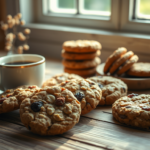With the change in seasons, your skin goes through its own set of challenges. Dry air, fluctuating temperatures, and increased sensitivity are all common issues during fall. To maintain a healthy glow, it’s essential to transition your skincare routine. In this post, we’ll explore everything you need to know to keep your skin hydrated, nourished, and protected from the elements this fall, from the latest viral trends to science-backed skincare solutions.
1. Understanding the Impact of Fall on Your Skin: Why You Need to Adjust Your Routine
Before diving into products and techniques, it’s important to understand why fall wreaks havoc on your skin. As temperatures drop, humidity decreases, which leads to moisture loss from the skin’s outermost layer (stratum corneum). This results in transepidermal water loss (TEWL)—a process where moisture evaporates from the skin more rapidly than usual, leading to dryness, flakiness, and irritation.
Key Points:
- Cold air can constrict blood vessels, reducing circulation and nutrient delivery to the skin.
- Indoor heating exacerbates dryness, leaving skin feeling tight and sensitive.
- Sun exposure still poses a risk, especially on clear, sunny fall days. UV damage, although less intense than in summer, can lead to premature aging and pigmentation.
2. Hydration Heroes: More Than Just Hyaluronic Acid
Hyaluronic Acid is a well-known staple, but it’s only part of the equation. While it helps attract water, a balanced hydration routine should also include humectants, emollients, and occlusives to create layers of moisture.
- Humectants (e.g., hyaluronic acid, glycerin, aloe vera) draw water to the skin.
- Emollients (e.g., squalane, shea butter, fatty acids) smooth and soften the skin by filling in the cracks between dead skin cells.
- Occlusives (e.g., petrolatum, beeswax, lanolin) form a protective layer to lock in hydration.
Advanced Tip: Pairing hyaluronic acid with polyglutamic acid, a lesser-known but powerful humectant, can boost your skin’s hydration levels. Polyglutamic acid is even more effective at retaining moisture, working synergistically with hyaluronic acid to provide long-lasting hydration.
3. The Science of Barrier Repair: Ceramides, Cholesterol, and Fatty Acids
Fall is the season of barrier repair, which requires more than just heavy moisturizers. The skin’s moisture barrier is made up of lipids (ceramides, cholesterol, and fatty acids), which are essential for keeping moisture in and irritants out. When this barrier is compromised, it leads to increased transepidermal water loss and inflammation, which manifests as redness, tightness, and breakouts.
How to Repair and Strengthen Your Barrier:
- Ceramides: Naturally occurring lipids that restore barrier function and keep skin smooth and supple.
- Cholesterol: Works with ceramides to fill in gaps in the lipid barrier.
- Fatty Acids: Essential for maintaining the skin’s structure, these help to reinforce the lipid layer.
Product Recommendations:
- La Roche-Posay Toleriane Double Repair Face Moisturizer: Contains ceramides and glycerin to restore barrier function. You can find this product on Amazon here.
- CeraVe PM Facial Moisturizing Lotion: A cult favorite for ceramide and niacinamide lovers, perfect for night-time repair. You can find this product on Amazon here.
Advanced Insight: Over-exfoliation (with AHAs, BHAs, or retinoids) can severely weaken your skin barrier. In the fall, it’s crucial to scale back on exfoliating treatments and focus on barrier-supporting ingredients.
4. Slugging and Beyond: Moisture Locking Techniques for Dry Skin
Slugging is a method where you apply an occlusive layer (like Vaseline [found here] or Aquaphor [found here]) over your nighttime skincare products to prevent moisture loss and encourage deeper penetration of active ingredients. This method has gained traction due to its simplicity and effectiveness, but it’s best for very dry or compromised skin.
Why Slugging Works:
- Occlusives trap moisture and help prevent evaporation.
- The occlusive layer enhances the absorption of other skincare products by creating a seal.
Important Considerations:
- Slugging isn’t for everyone—those with oily or acne-prone skin may find that it clogs pores and leads to breakouts.
- For more sensitive skin types, try lighter occlusives like squalane (found here) or lanolin (found here).
Beyond Slugging: For those who don’t like the heaviness of occlusives, opt for moisture sandwiching—applying a hydrating toner or essence (like Hada Labo Gokujyun Lotion [found here]) between layers of your serum and moisturizer to keep your skin supple without the weight of petrolatum.
5. Seasonal Skincare Ingredients: Pumpkin Enzymes, Honey, and More
Seasonal ingredients aren’t just trendy—they’re also power-packed with benefits.
- Pumpkin Enzymes: These natural exfoliants help dissolve dead skin cells without the need for physical scrubbing, which can be harsh in dry weather.
- Benefits: Brightens complexion, smooths texture, and boosts cell turnover.
- Product Example: Peter Thomas Roth Pumpkin Enzyme Mask (found on Amazon here)—a potent exfoliating mask that leaves the skin visibly smoother and more radiant.
- Honey: A humectant and antimicrobial agent, honey is excellent for hydrating and calming the skin, particularly if you’re dealing with irritation or sensitivity.
- Benefits: Heals wounds, soothes irritation, and provides long-lasting moisture.
- Product Example: Farmacy Honey Potion (found on Amazon here)—a warming honey mask that hydrates and provides an antioxidant boost.
- Niacinamide: Also known as Vitamin B3, this fall hero is anti-inflammatory and helps improve barrier function, making it a must-have in cooler weather.
- Benefits: Reduces redness, improves the appearance of pores, and strengthens the skin barrier.
- Product Example: The Ordinary Niacinamide 10% + Zinc 1% (found on Amazon here)—an affordable serum that combats dullness and uneven skin tone.
6. SPF in Fall: The Year-Round Must-Have
Many believe that with the arrival of fall, sun protection becomes less important. However, UV radiation remains a significant threat year-round, even when the sun feels weaker. Up to 80% of UV rays can penetrate through clouds, causing cumulative damage like hyperpigmentation, collagen breakdown, and increased skin cancer risk.
SPF Tips for Fall:
- Opt for an SPF of at least 30 and ensure broad-spectrum protection against both UVA and UVB rays.
- Consider sunscreens that also provide hydrating ingredients, like hyaluronic acid or glycerin, to combat fall dryness.
Product Recommendations:
- EltaMD UV Clear Broad-Spectrum SPF 46 (found on Amazon here): Lightweight and ideal for sensitive or acne-prone skin.
- Supergoop! Unseen Sunscreen SPF 40 (found on Amazon here): Provides an invisible, matte finish perfect for daily wear under makeup.
Fall is the ideal season to rethink and reset your skincare routine. From boosting hydration with multi-layered approaches to repairing your moisture barrier and trying trendy techniques like slugging, there’s no shortage of ways to keep your skin glowing. Add seasonal ingredients like pumpkin and honey to brighten and hydrate, and don’t forget the sunscreen—even on the cloudiest fall days.
#FallSkincare2024 #SkincareRoutine #HydrationHeroes #BarrierRepair #SluggingTrend #PumpkinEnzymes #HoneySkincare #SustainableBeauty #GlowingSkin






